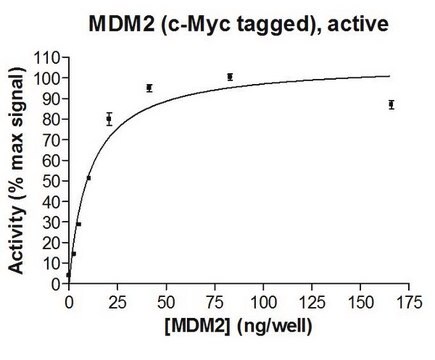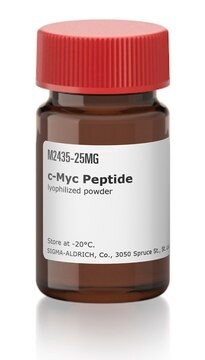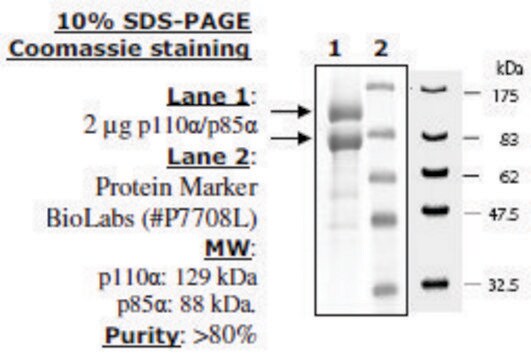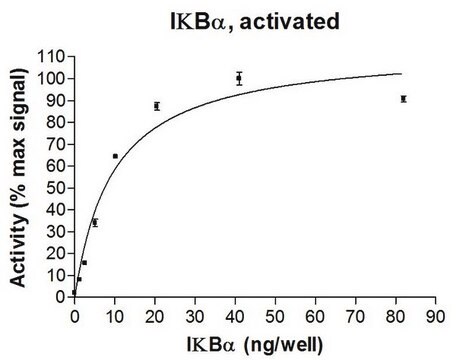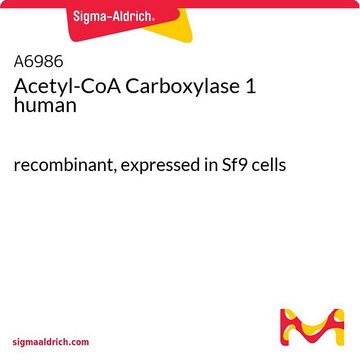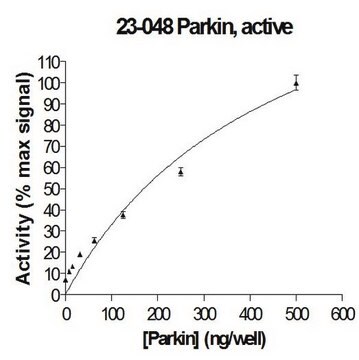23-046-M
Parkin (c-Myc tagged) Protein, active, 10 µg
Active, full length, recombinant human Parkin. N-terminal c-Myc, 6His-tagged. For use in Enzyme Assays. Functions as an E3 ligase in ubiquitination assays.
Synonym(s):
Parkinson juvenile disease protein 2, PARK2, PRKN
Sign Into View Organizational & Contract Pricing
All Photos(2)
About This Item
UNSPSC Code:
12352202
eCl@ss:
32160405
NACRES:
NA.43
Recommended Products
General description
Parkin is an E3-ubiquitin ligase belonging to the RBR (RING – In Between RING – RING) family. Mutations in Parkin that result in a loss-of-function are the most frequent cause of familial Parkinson’s disease and are responsible for a large percentage of autosomal recessive juvenile parkinsonism (AR-JP). In addition to its auto-ubiquitination, Parkin can also ubiquitinate various substrates, including the CDK2-interacting protein cyclin E1, the α-synuclein-interacting protein synphilin-1, the synaptic vesicle-associated CDC-rel1 and the p38 subunit of aminoacyl-tRNA synthetase/JTV-1. Ubiquitination of substrates occurs in conjunction with the E2 enzymes UbcH7, UbcH8 or UbcH13/Uev1.
Application
Ubiquitination Cascade Comoponent: E3
Physical form
Purified using immobilized metal affinity chromatography.
Legal Information
UPSTATE is a registered trademark of Merck KGaA, Darmstadt, Germany
Disclaimer
Unless otherwise stated in our catalog or other company documentation accompanying the product(s), our products are intended for research use only and are not to be used for any other purpose, which includes but is not limited to, unauthorized commercial uses, in vitro diagnostic uses, ex vivo or in vivo therapeutic uses or any type of consumption or application to humans or animals.
Signal Word
Warning
Hazard Statements
Precautionary Statements
Hazard Classifications
Skin Sens. 1
Storage Class Code
12 - Non Combustible Liquids
WGK
WGK 1
Flash Point(C)
Not applicable
Certificates of Analysis (COA)
Search for Certificates of Analysis (COA) by entering the products Lot/Batch Number. Lot and Batch Numbers can be found on a product’s label following the words ‘Lot’ or ‘Batch’.
Already Own This Product?
Find documentation for the products that you have recently purchased in the Document Library.
Our team of scientists has experience in all areas of research including Life Science, Material Science, Chemical Synthesis, Chromatography, Analytical and many others.
Contact Technical Service
